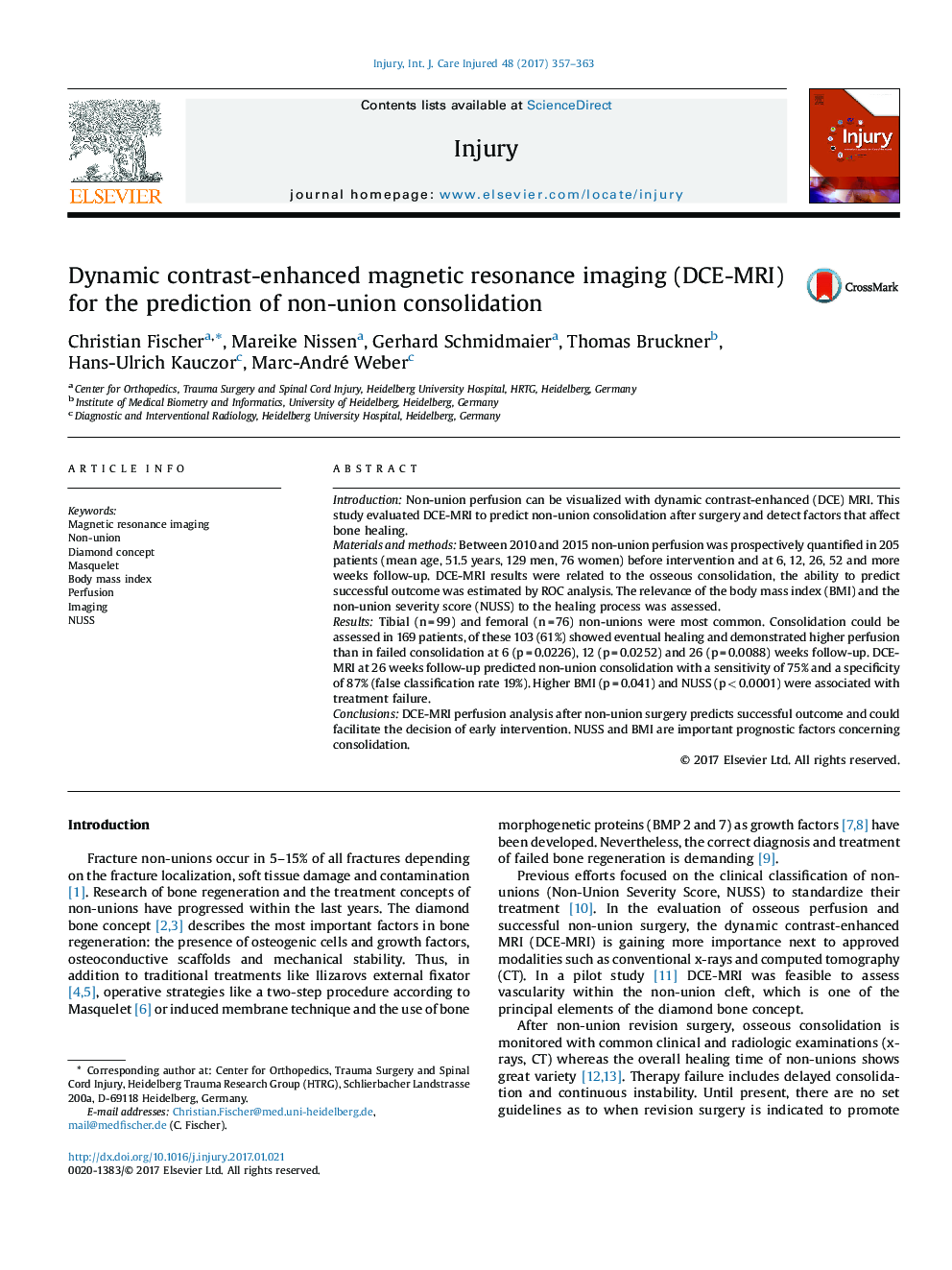| Article ID | Journal | Published Year | Pages | File Type |
|---|---|---|---|---|
| 5652805 | Injury | 2017 | 7 Pages |
IntroductionNon-union perfusion can be visualized with dynamic contrast-enhanced (DCE) MRI. This study evaluated DCE-MRI to predict non-union consolidation after surgery and detect factors that affect bone healing.Materials and methodsBetween 2010 and 2015 non-union perfusion was prospectively quantified in 205 patients (mean age, 51.5 years, 129 men, 76 women) before intervention and at 6, 12, 26, 52 and more weeks follow-up. DCE-MRI results were related to the osseous consolidation, the ability to predict successful outcome was estimated by ROC analysis. The relevance of the body mass index (BMI) and the non-union severity score (NUSS) to the healing process was assessed.ResultsTibial (n = 99) and femoral (n = 76) non-unions were most common. Consolidation could be assessed in 169 patients, of these 103 (61%) showed eventual healing and demonstrated higher perfusion than in failed consolidation at 6 (p = 0.0226), 12 (p = 0.0252) and 26 (p = 0.0088) weeks follow-up. DCE-MRI at 26 weeks follow-up predicted non-union consolidation with a sensitivity of 75% and a specificity of 87% (false classification rate 19%). Higher BMI (p = 0.041) and NUSS (p < 0.0001) were associated with treatment failure.ConclusionsDCE-MRI perfusion analysis after non-union surgery predicts successful outcome and could facilitate the decision of early intervention. NUSS and BMI are important prognostic factors concerning consolidation.
